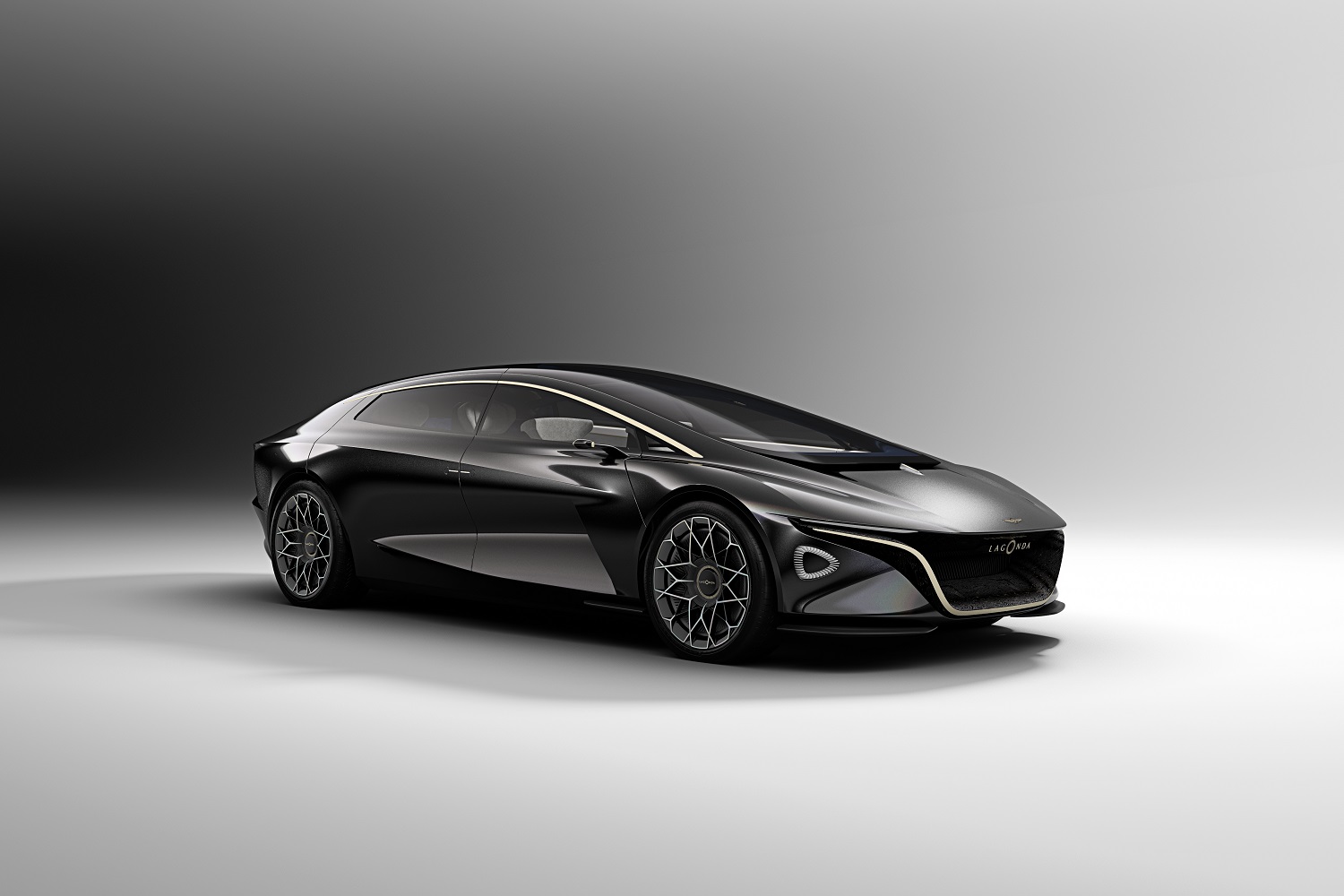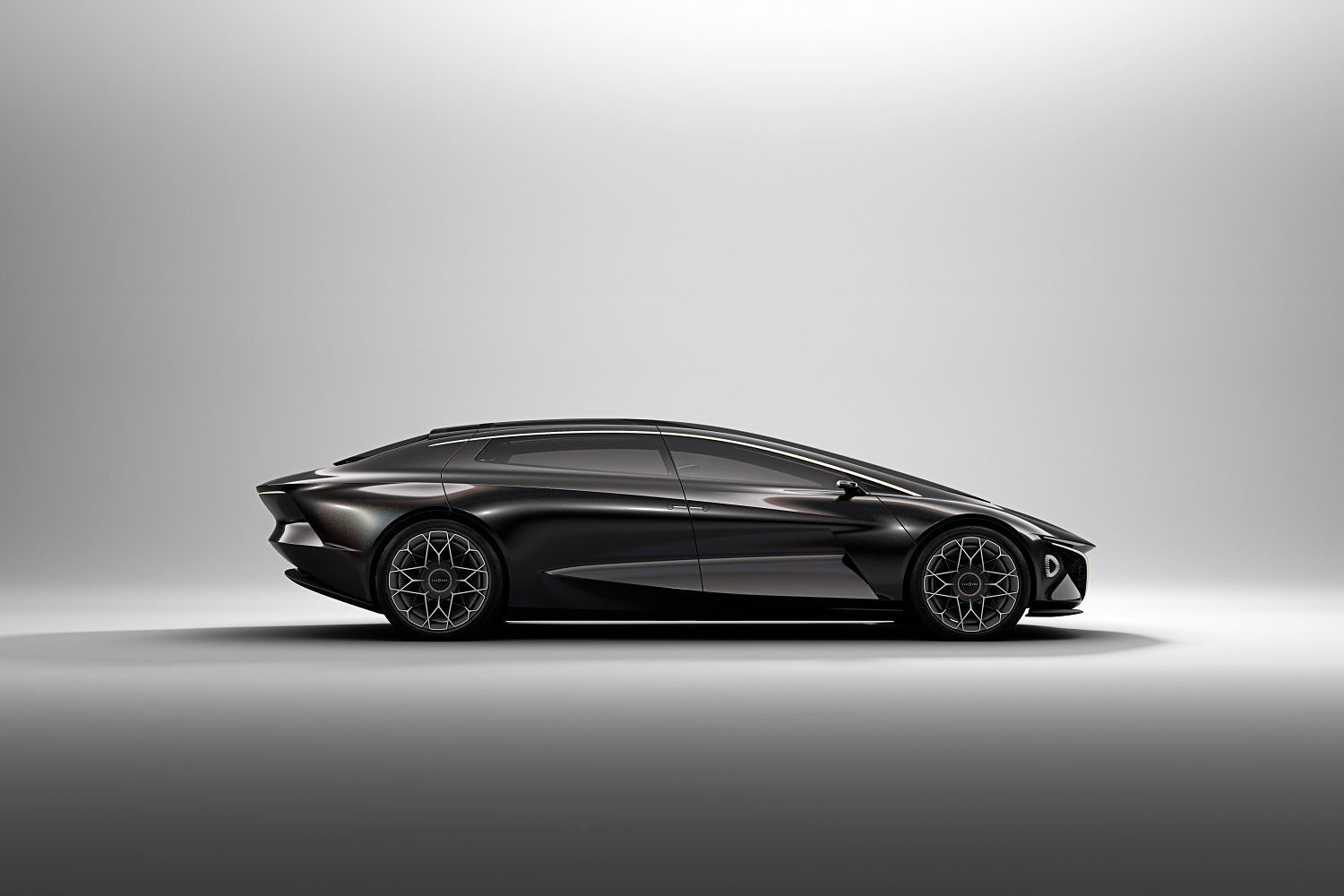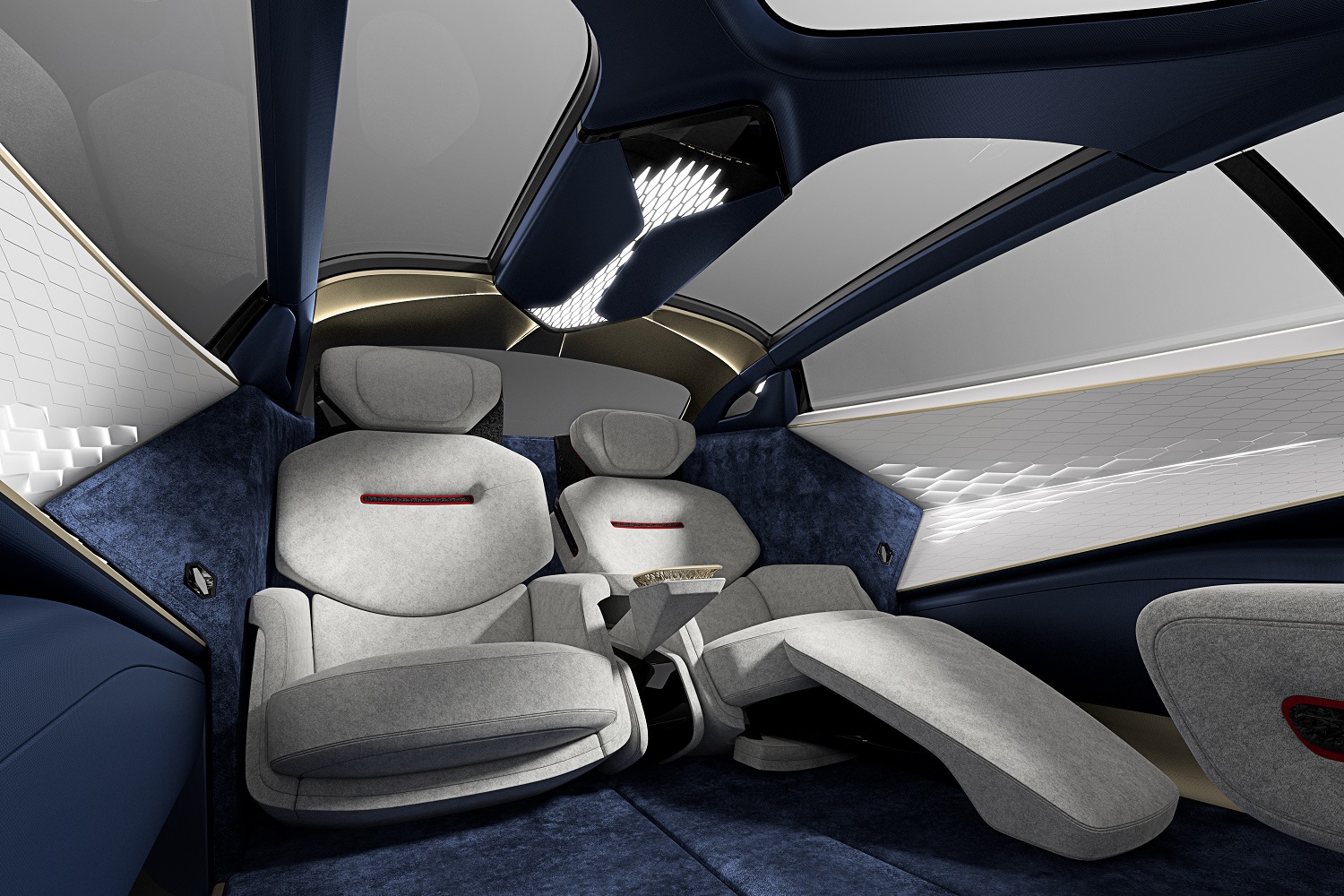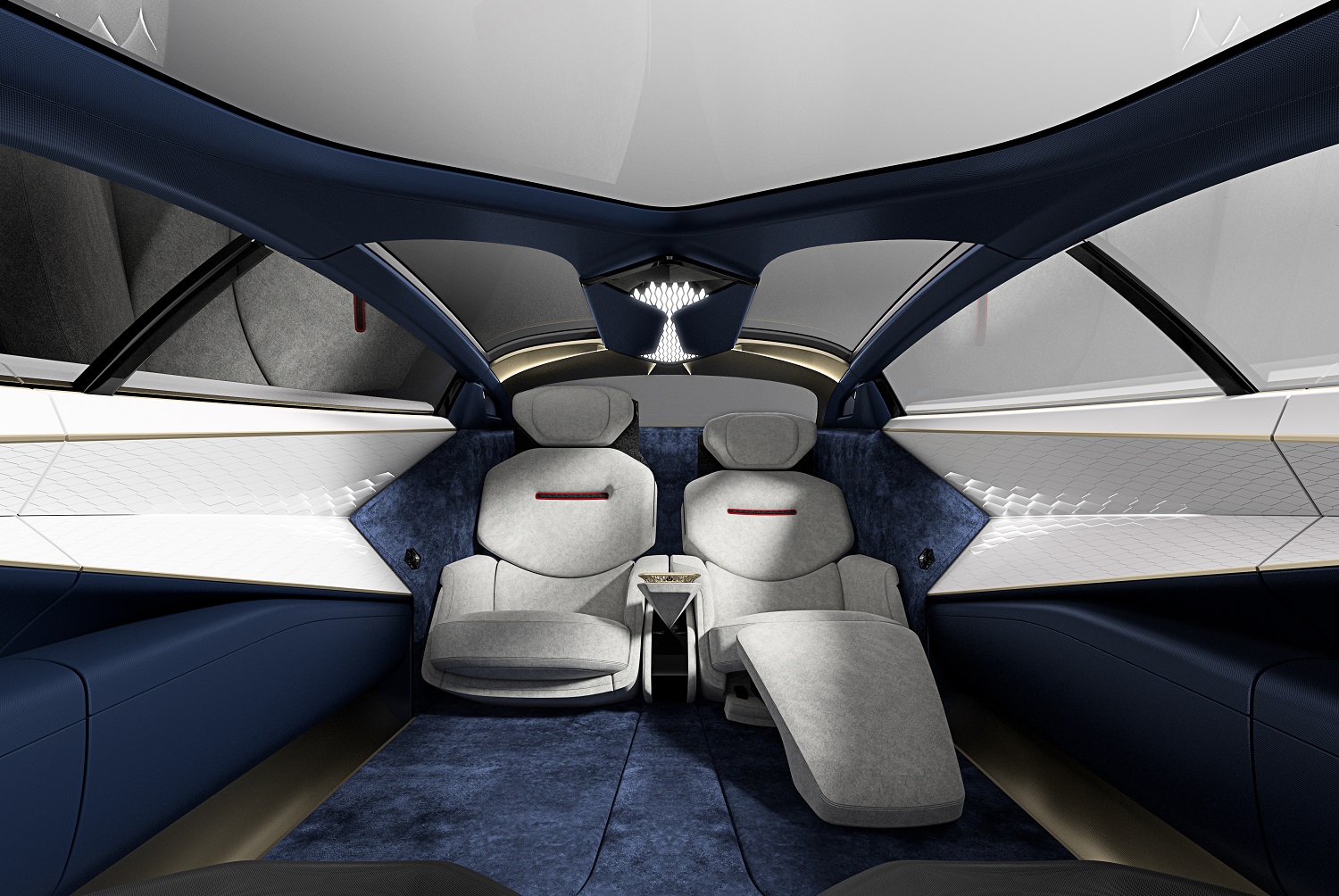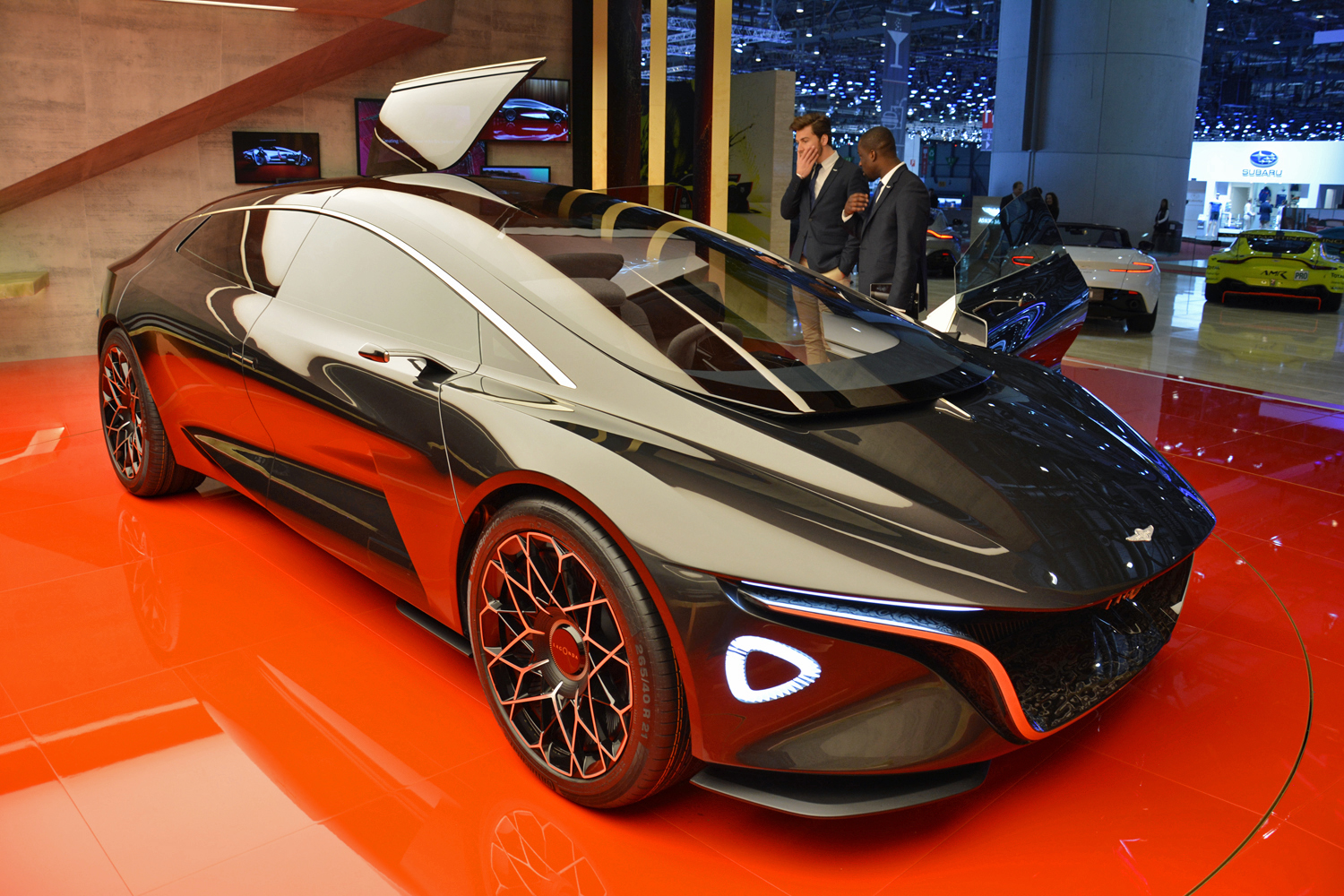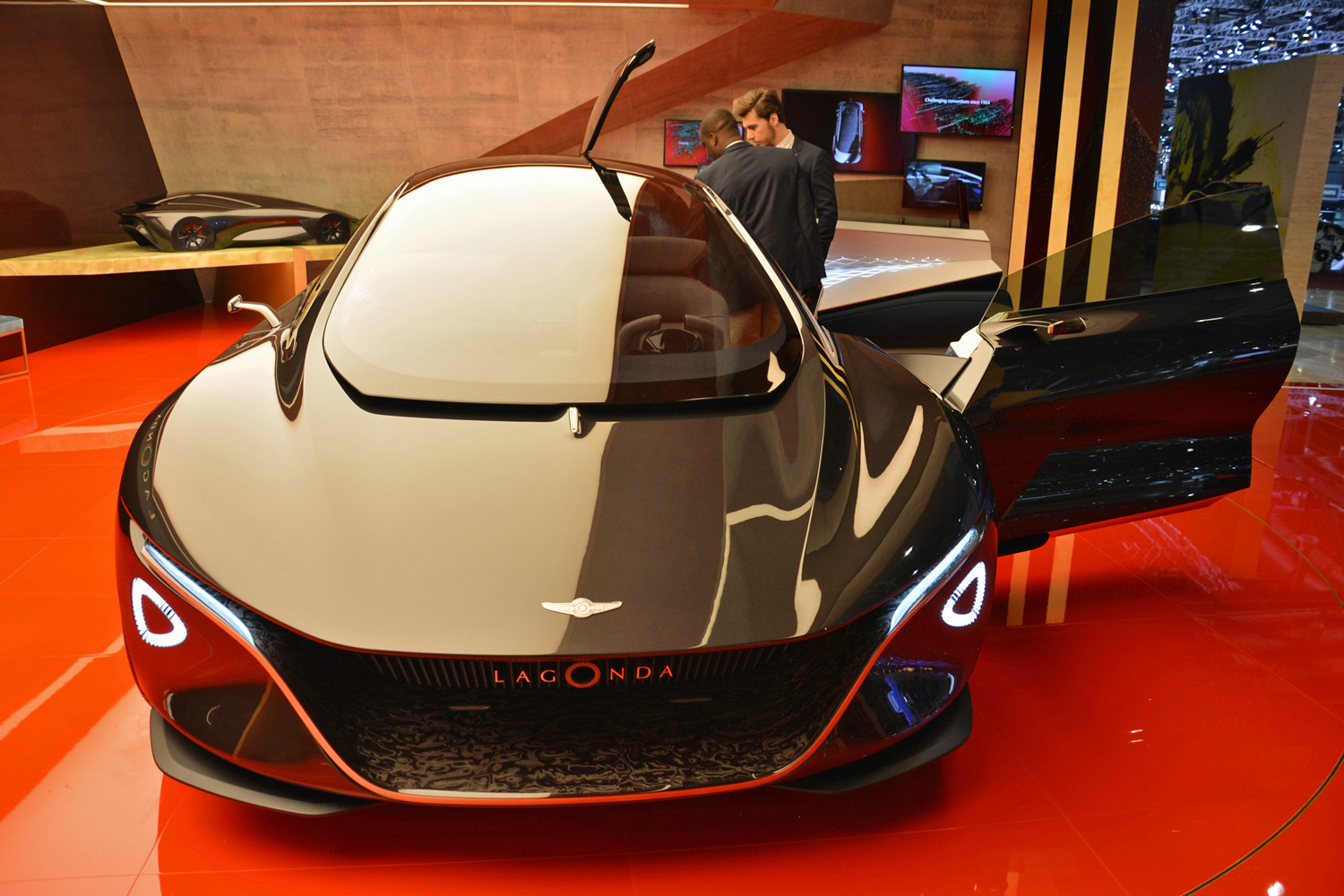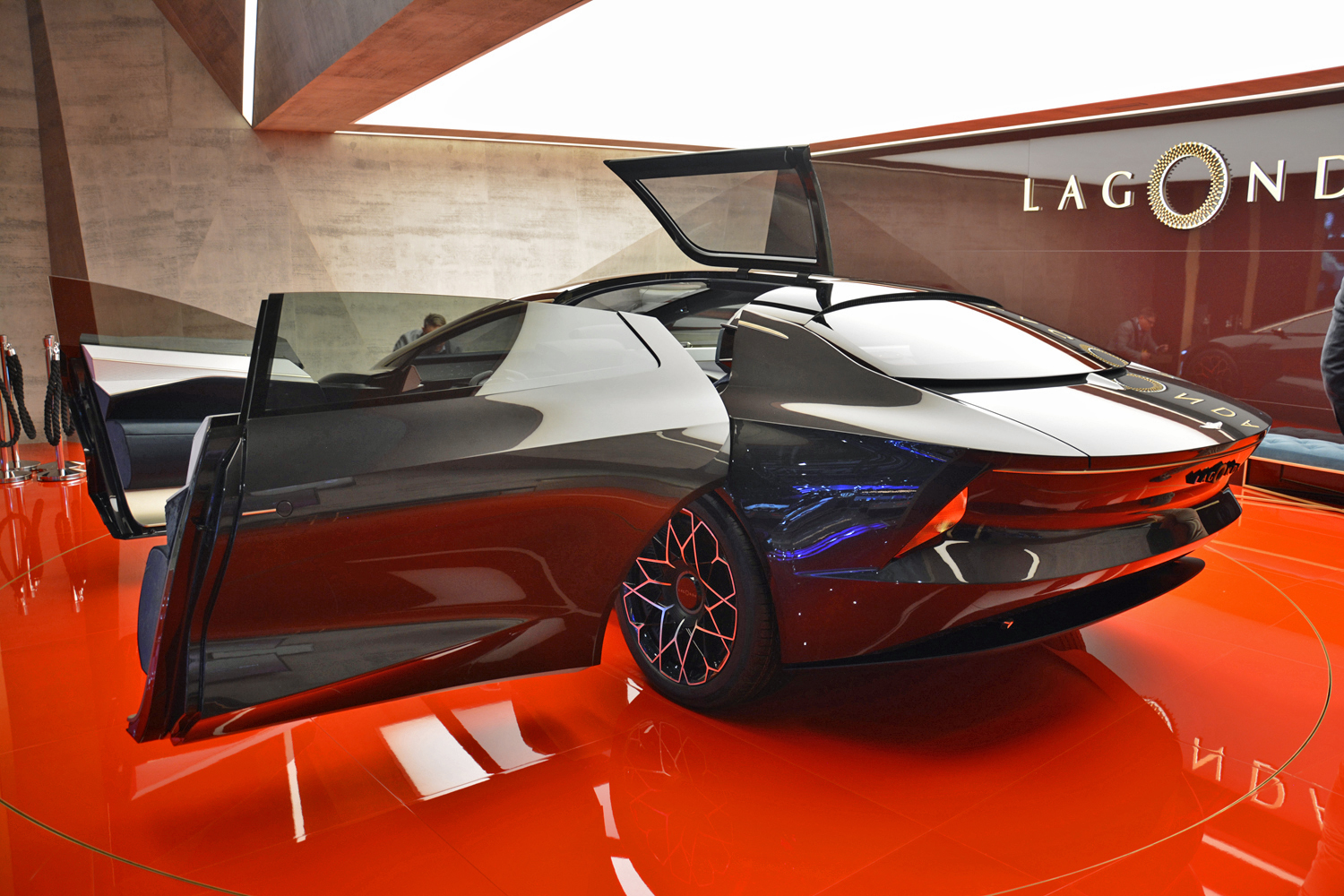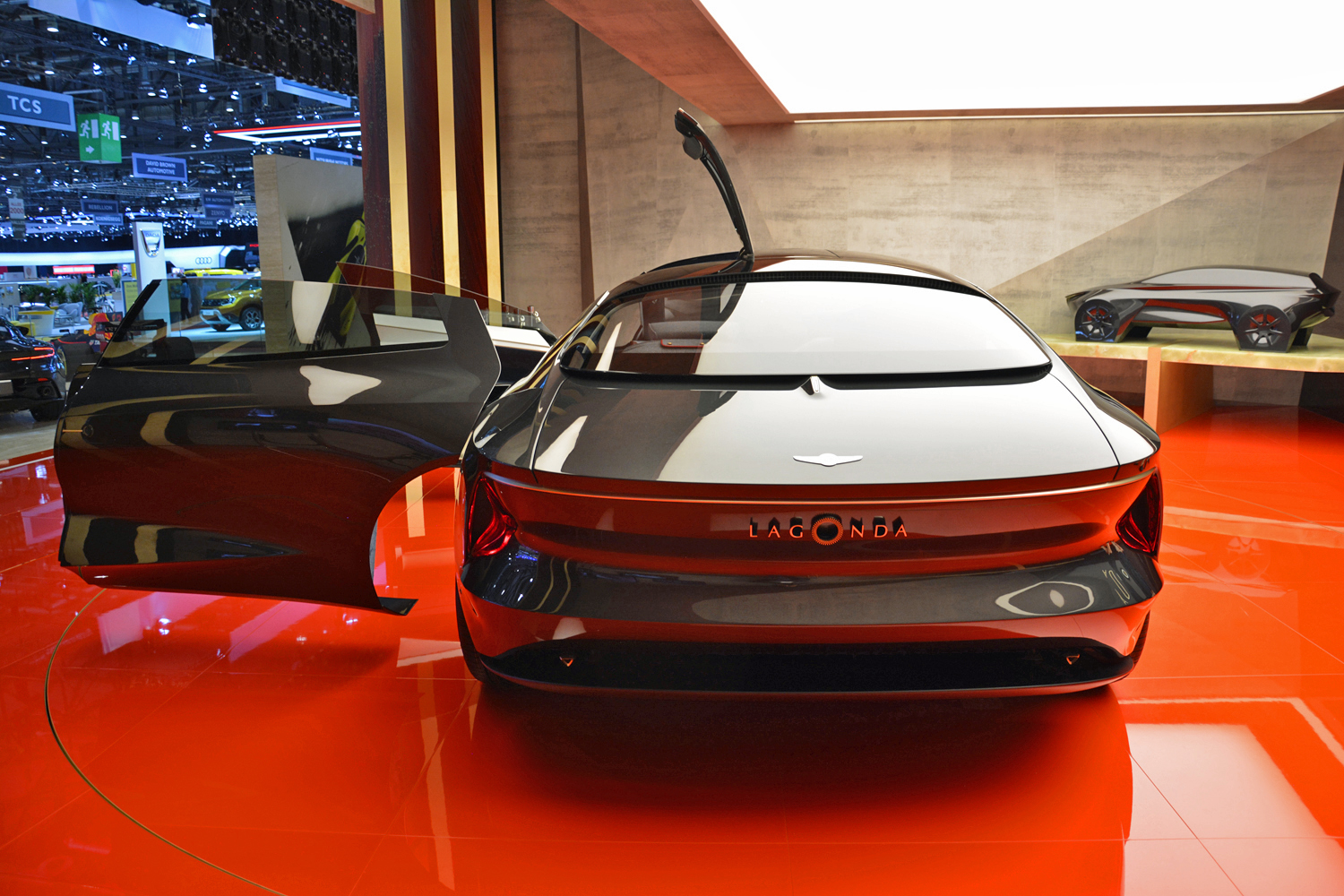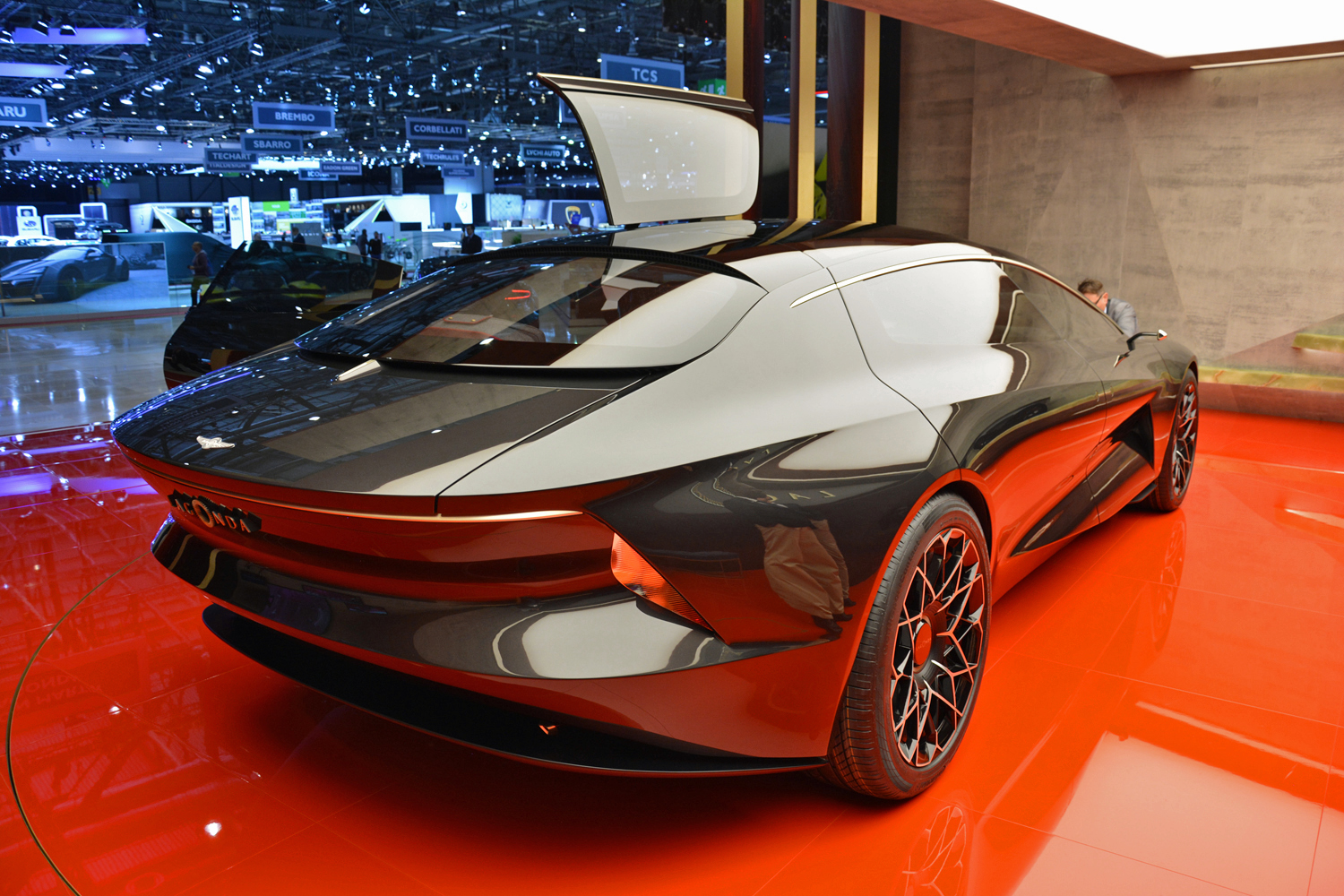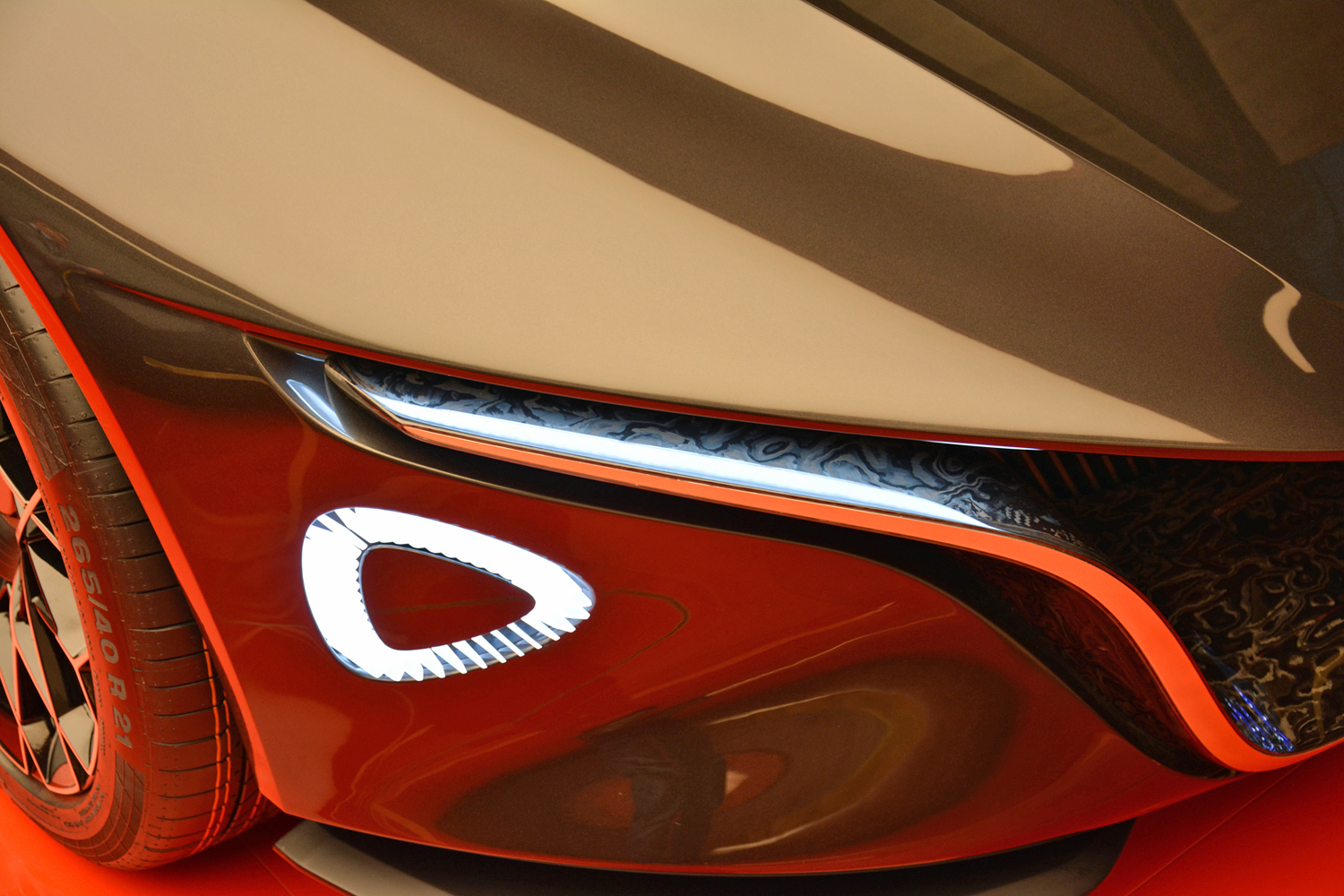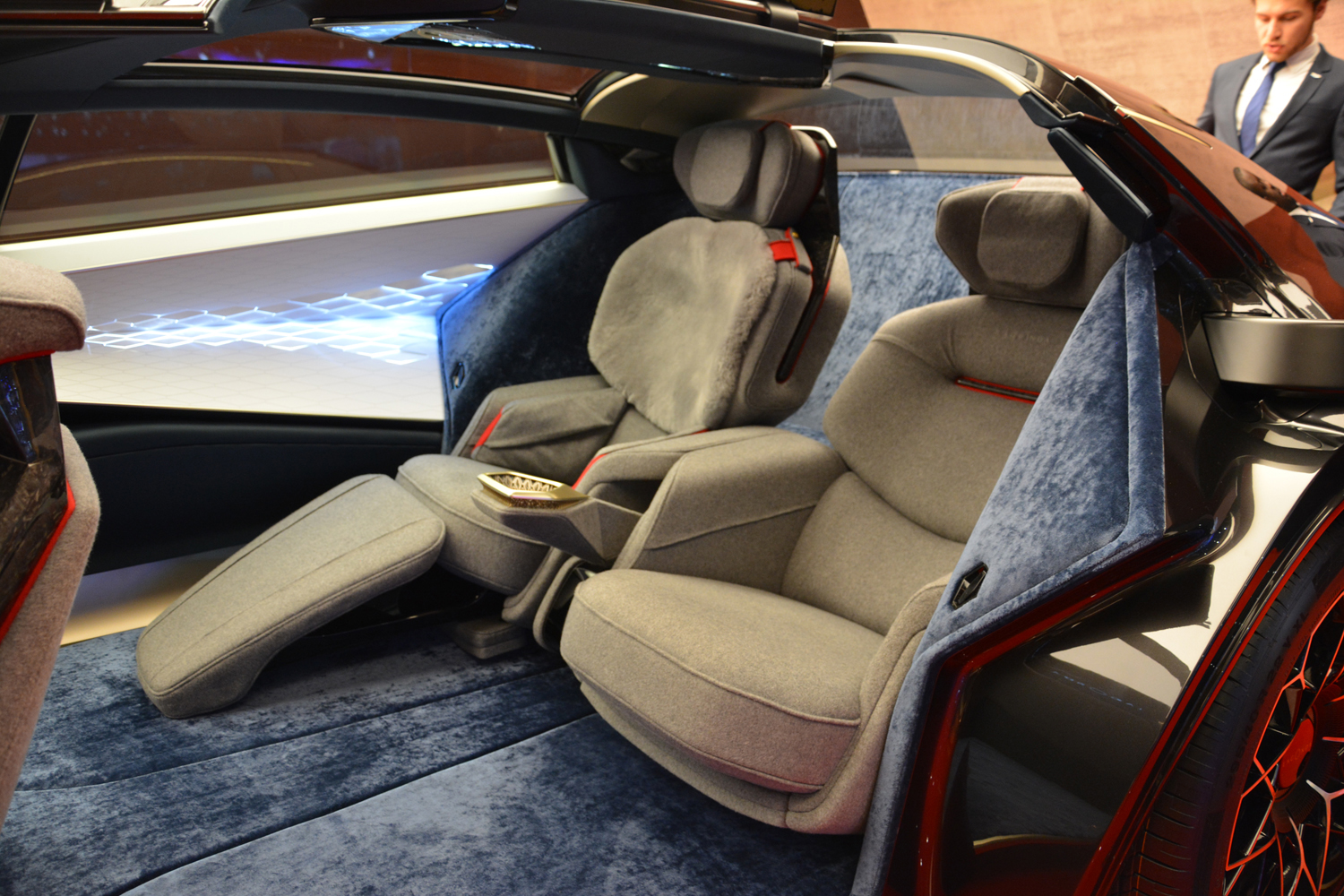Aston Martin outlined its vision for reviving the Lagonda nameplate at the Geneva Auto Show with a highly futuristic concept. Reflecting a major trend at the event, the Lagonda Vision Concept is both purely electric and entirely autonomous. Let’s step inside.
Befitting of its flagship status, the Lagonda Vision Concept takes the form of a spacious, luxurious limousine. Interior designers took advantage of electrification and autonomy to create a spacious cabin that offers business class-like seating for four adults. They worked with British furniture designer David Linley to incorporate materials like wool, silk, and cashmere.
The Lagonda Vision Concept is capable of level-four autonomy — at least in theory. That means it can drive itself without any human intervention on all types of roads and in every condition. When the driver wants to become a passenger, the steering wheel retracts into the dashboard at the push of a button. It can also slide from one side of the car to the other, which eliminates the costly and time-consuming process of creating different cars for right- and left-hand drive markets.
Aston points out the Lagonda Vision is shorter and lower than a standard limousine, like the Rolls-Royce Phantom. The wedge shape wasn’t chosen at random. It’s a discreet homage to the boxy Lagonda sedan introduced in the 1970s. It breaks all ties with the company’s current design language with the exception of the grille. Going electric let stylists change the proportions. Unlike today’s crop of high-end sedans, the Vision Concept has a hood that’s relatively short and low.
Speaking of electricity, technical specifications remain a mystery at this point. All we know is that it doesn’t use a drop of gasoline. We’ll have to wait a little bit longer to find out how long it can drive on a single charge and how quick it accelerates, however.
Aston Martin didn’t build the Lagonda Vision Concept merely to turn heads on the auto show circuit. It will build up the Lagonda brand in the coming years with the aim of turning it into the world’s first zero-emissions company in the luxury segment. The lineup will include a sedan inspired by the Vision concept, an SUV, and a coupe. Expect to see the first production models arrive around the turn of the decade.
Editors' Recommendations
- Aston Martin combines cameras and mirrors to give drivers maximum visibility
- Maserati is balancing the past and the future to reinvent all of its cars
- 2020 Karma Revero GTS adds performance to go with its sleek looks
- 2021 Aston Martin DBX is perfect for a 00 agent with a family
- Acura adds some supercar touches to its MDX family crossover

